The first batch of Model Ys have arrived at Fremantle Port today in preparation for the first WA deliveries over the next few weeks.
Nearly 800 new Teslas so far this quarter
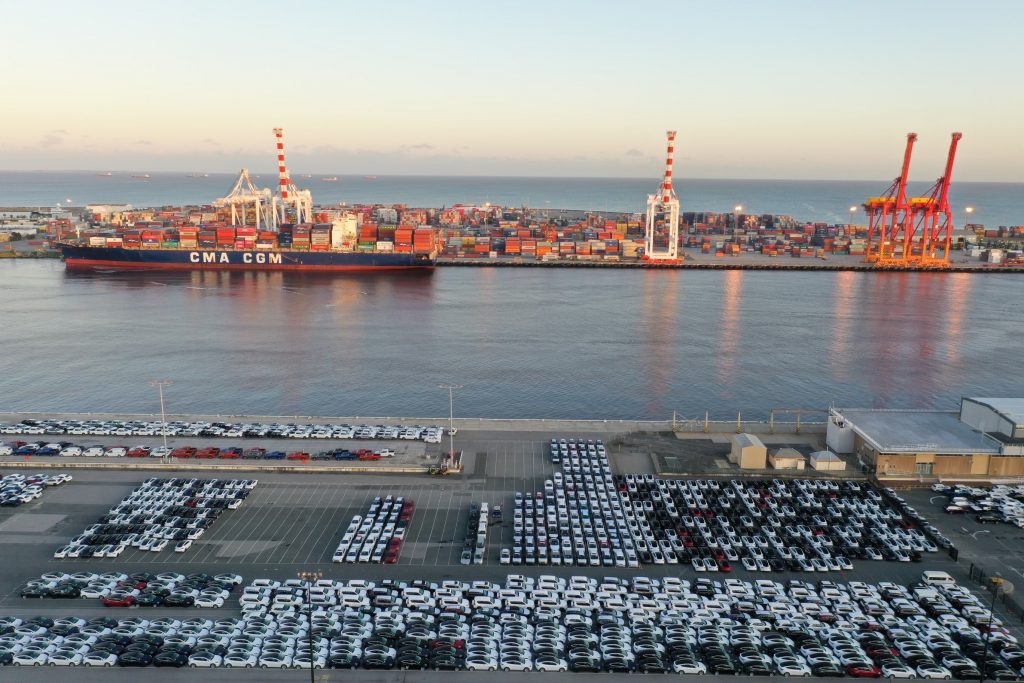
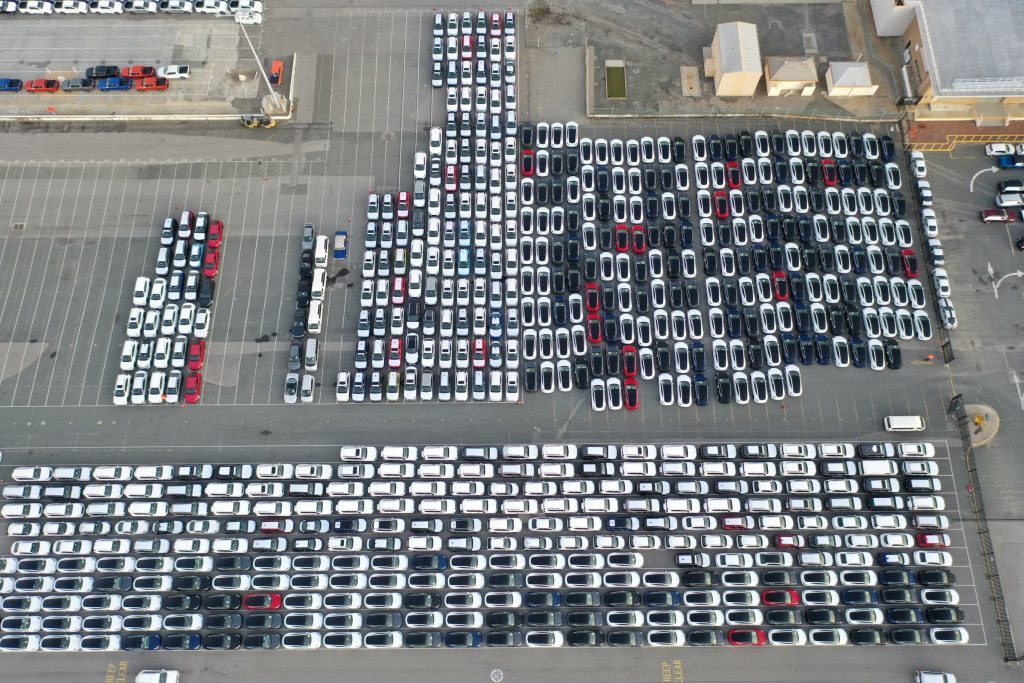
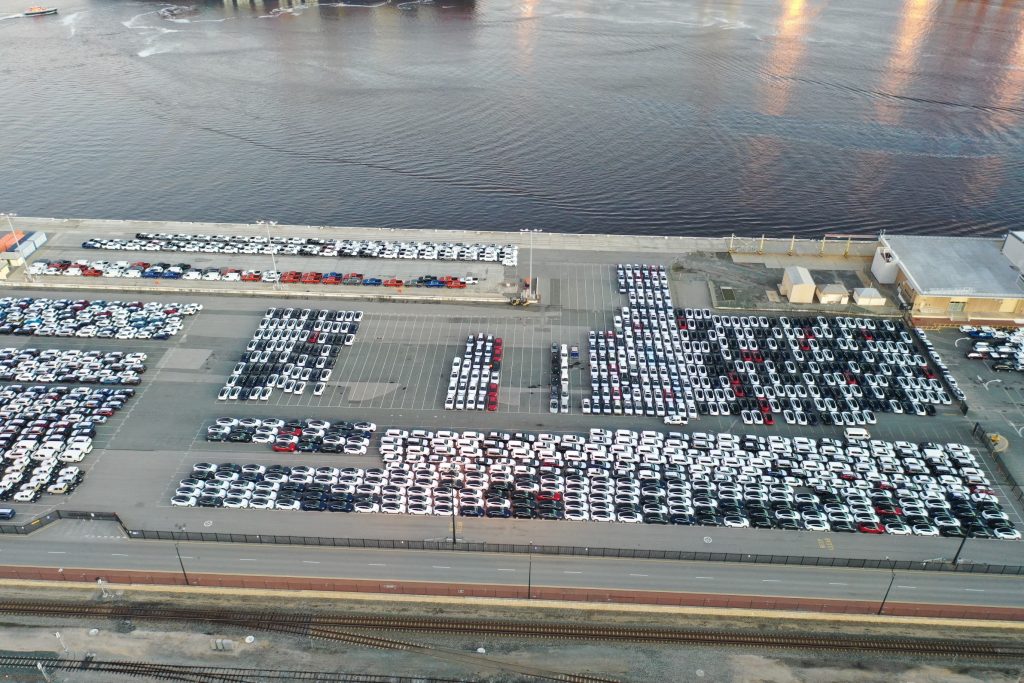
The first batch of Model Ys have arrived at Fremantle Port today in preparation for the first WA deliveries over the next few weeks.
Nearly 800 new Teslas so far this quarter








The influx of new electric vehicle models (EVs) and especially the recent arrival of the Tesla Model Y, heralds a rush of EV owners listing their “old” EVs for sale as they swap or upgrade to the new hotness.
I then saw this recent article by a well respected publisher in the Western Australian automotive community. It really ground my gears! “grinded my gears”? Who knows!? 🤷♂️ I was frustrated.
The article is a problem in my opinion because it might leave a used EV buyer to have misinformed expectations about electric vehicles and their batteries. So to set the record straight, I’m going to quote a few sections from said article, and correct the FUD (fear, uncertainty, and doubt). Hopefully those who care for the details, and getting an EV with as much range remaining as possible, will appreciate the following explanations.
Degradation is the natural chemical process that an EV battery undergoes as it’s used. As energy goes in and out of the battery many many times, it loses the ability to retain the same amount of energy as it did when it was new.
Various studies, and Tesla’s own data, suggests the average degradation is around 1 per cent of the original capacity per year.
It doesn’t work like this, firstly because degradation isn’t a function of time, but closer to a function of kilometres (km) driven. The more energy in and out of the battery (its “cycles”) the more degradation. Lithium based batteries have a finite lifetime. This is why your phone battery won’t last as long 2 years in, compared to when it was new.
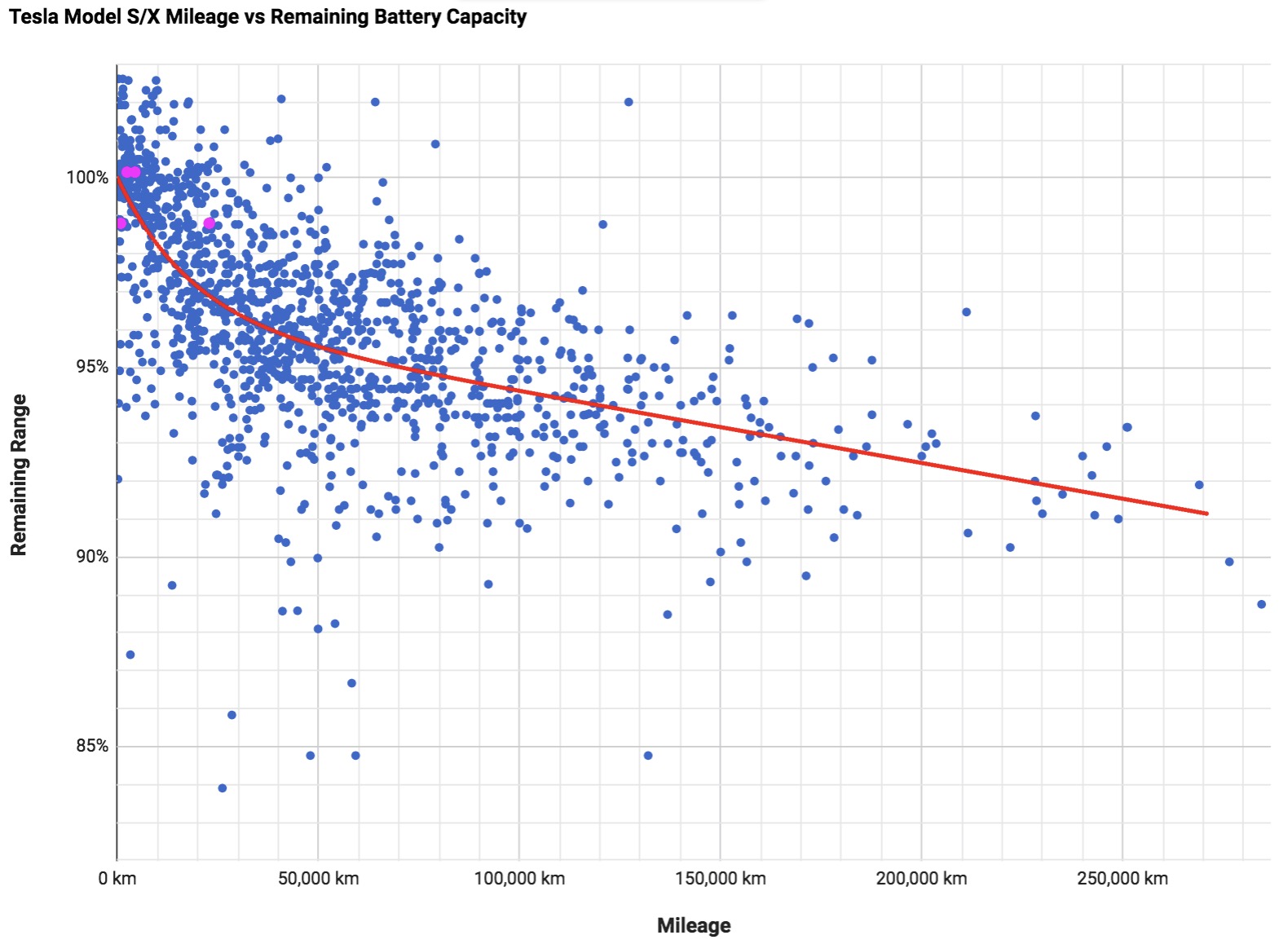
This image was taken from an article on electrek.co which uses Tesla data.
As you can see the degradation is mostly linear after about 50,000 km. But in the first part of the EVs life the capacity drops a little faster. In the case of a Tesla we know that some vehicles have well over 90% of the original capacity after many 100s of thousands of km. Other vehicles may be closer to 80% like mine (~2.5y old and 116,000k on the odometer/ODO).
It seems that the less “work” the car does in terms of demands on the battery, the longer it will last. Many EV owners are quite happy to share how their batteries have degraded after 1, 2, 3 or even 5 years of use.
It seems that how an OEM manages a battery has a huge role to play in the longevity of the battery and minimising degradation. I know someone with a gen1 Nissan Leaf who is down to 50% of the original capacity. These batteries are not liquid cooled like a Tesla and generally considered some of the worst cells on the used battery market because of the poor design.
But don’t expect too much when it comes to your local “automotive workshop”. They probably won’t have a clue.
Most automotive workshops should be able to access this data by plugging into the onboard diagnostics (OBD2) port, or in some instances it could be relayed using remote connectivity.
In the case of a Tesla for example, the data you’re after isn’t accessible simply by plugging in a generic OBD2 link. Tesla also doesn’t make it easy to find on the vehicle’s user interface or in the mobile app. You will need a bit of DIY to install a relatively inexpensive adapter and download an app to connect to the car and capture the values.
Read on to see some tips on getting the exact figures from your seller.
Between them it allows you to calculate the battery capacity and compare it to the original capacity.
No, it doesn’t.
Most EVs have a series of complex formulas, variables and historical driving data that form the “estimated range in km” displayed inside the vehicle. It’s for this reason that it’s often not useful to try to estimate battery degradation working back from these “range” numbers. The only reliable way to know is to extract the raw values from the car’s computer and use those. One example from a friends Tesla:
full pack when new: 52.4 kWh
nominal full pack: 48.2 kWh
Therefore this battery has 91.9% of its original capacity remaining. That’s about 8% degradation. That’s pretty normal I’m finding for a 2020 model and 24,000 km on the clock.
Everything in a car is going to wear and degrade over time and especially when it’s under load or working hard. The moving parts are especially important in an ICE vehicle (Internal Combustion Engine; a non-EV) and this is why it’s conventional to use the km on the ODO as a primary indicator of the wear and tear and a big input to one’s assessment of the value of a used vehicle.
With EVs, this is not as important as the battery degradation. Yes, it will in most cases, correlate strongly with the km driven. But not always. An older EV driven very gingerly may have far less degradation than a near new EV with a young driver who wants to drag everyone at the lights.
Tesla for example, quote a very specific warranty for various models ensuring that over a given lifetime (in years), a known capacity is warranted.

If the battery falls below this remaining capacity inside the age (years) or km driven, then the battery can be claimed for replacement under said warranty. This is good news for used EV owners and supports the real-world data we have measured above. A 10-year old Tesla is not going to be “dead” as I continue to see speculated online. It just won’t get you as far as it would have when it was new. Much like your phone. These EVs will change hands in the used car market for some time.
Ask the dealer or private seller what the remaining capacity is. If they don’t know or haven’t already printed it out for you, they may know someone who can help them capture it and give you the figures. Use the above chart as a rough guide to see if the remaining capacity is average for the km on the odometer. This should give you an idea of how much work the vehicle has been subject to in its life so far. Higher values (remaining capacity) are obviously better and will correlate with fewer km driven.
If you don’t feel like you’re getting the answers you want or your seller strikes you as the kind that doesn’t really have a good handle on the workings of batteries, then reach out to the folks here at TOCWA. We have a very friendly community of EV enthusiasts willing to lend a hand or share helpful advice.
Happy (informed) shopping.
Matt is an EV and battery enthusiast. He and his children enjoy pulling apart kids’ toys and “upgrading” them with recycled lithium batteries. Matt has been a Tesla owner since 2020 and is passionate about helping others cross the chasm into the new world. Matt has friends that ride horses purely for leisure. Soon his friends with ICE cars will be driving them purely for leisure too.
A copy of the original referenced article can be found in the Wayback Machine in the event the source is updated after publishing.
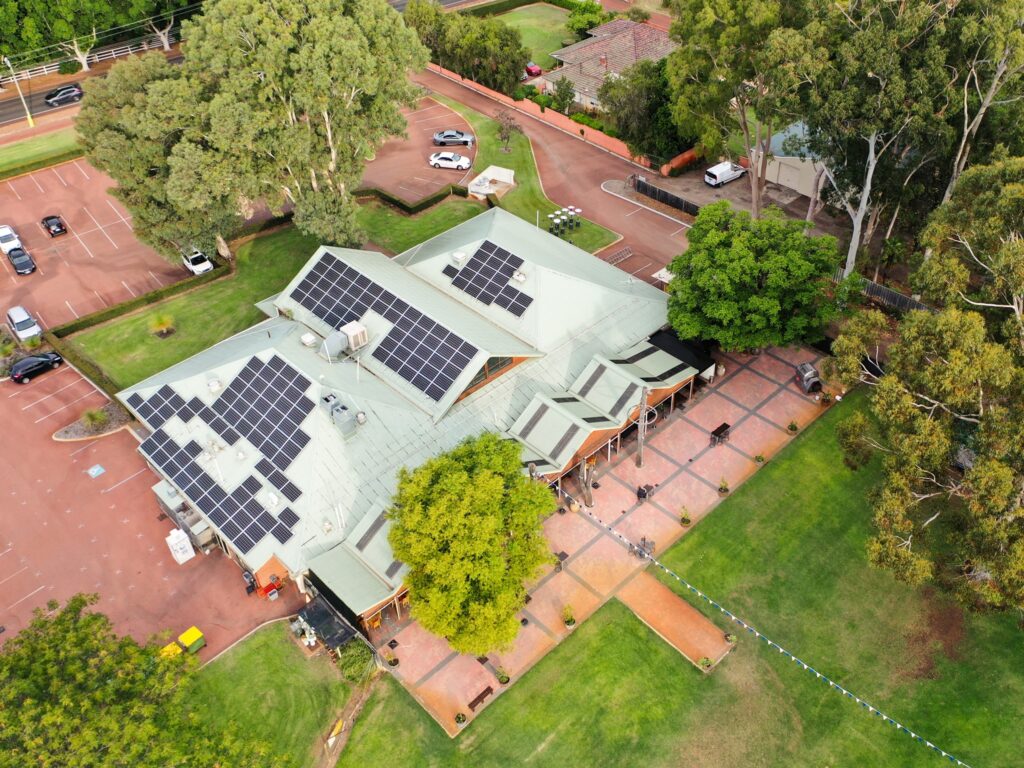
Everyone is invited to come along to the meetup at Valley Social (formally Elmar’s in the Valley) 8731 West Swan Rd, Henley Brook from 1.00PM onwards for a meal, drink and of course a chat about Tesla and EVs. Everyone is welcome regardless of the car you currently drive but EVs will get to park on the lawn behind the restaurant near the VIP Marquee seating. Please use the driveway around the left of the restaurant.
It’s an American BBQ inspired menu with lots of food and drink options. For those who are running low on electrons there will be limited free trickle charging available.
The event is open to everyone including those who have never seen a Tesla before. Non-Teslans please ask nicely and a club member might just take you for a spin!
It’s a great opportunity to meet club members and to see the cars in the flesh which we are all passionate about. It’s also a great way for new owners to learn more about their cars and to share in the vast pool of knowledge gained by other members.
Our next casual meetup is Sunday 7 August 2022 at 11:00am at:
The Kewdale Tavern, 139 Kewdale Rd, Kewdale

Casual meetups are open to everyone including those who have never seen a Tesla before.
It’s an ideal opportunity to meet club members and to see the cars in the flesh which we are all passionate about.
It’s also a great way for new owners to learn more about their cars and to share in the vast pool of knowledge gained by other members.
We hope to see you there and look forward to chatting about all things Tesla.